What Is A Kingfisher’s Diet? – a kingfisher pellet analysis
Many people will be familiar with owl pellets; grey-brown plum sized masses of fur, feathers and other indigestible material. You may have even had to dissect a few in biology class. What may not be as well-known is the fact that owls are not the only birds who produce regurgitated packets of glandular stomach contents. Other species such as herons, cormorants, gulls, corvids, shrikes and swallows, amongst others, produce pellets. Common kingfishers (Alcedo atthis) also cough up, or ‘cast’, a large peanut sized pellet. Pellets can take between 6 – 10 hours to form and a kingfisher may produce one or two a day.
You might recall that in November 2023, we were ‘lucky’ enough to catch (on film!) one of our kingfishers expelling a pellet at the dipping pond. Thoughtfully, this delightful little parcel of passed up prey items was deposited on the fence and the Visitor Centre Site Manager retrieved it for further analysis.
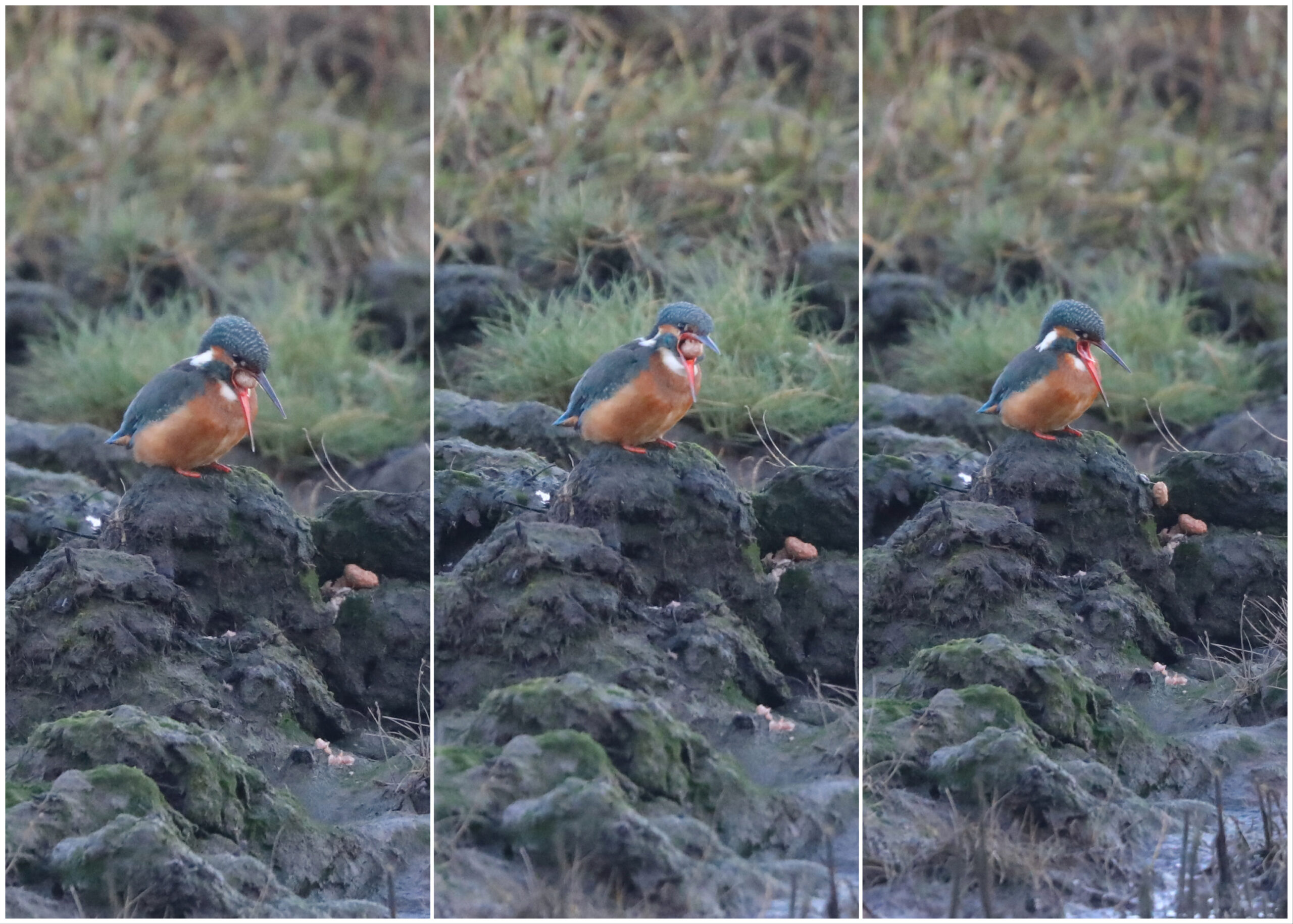
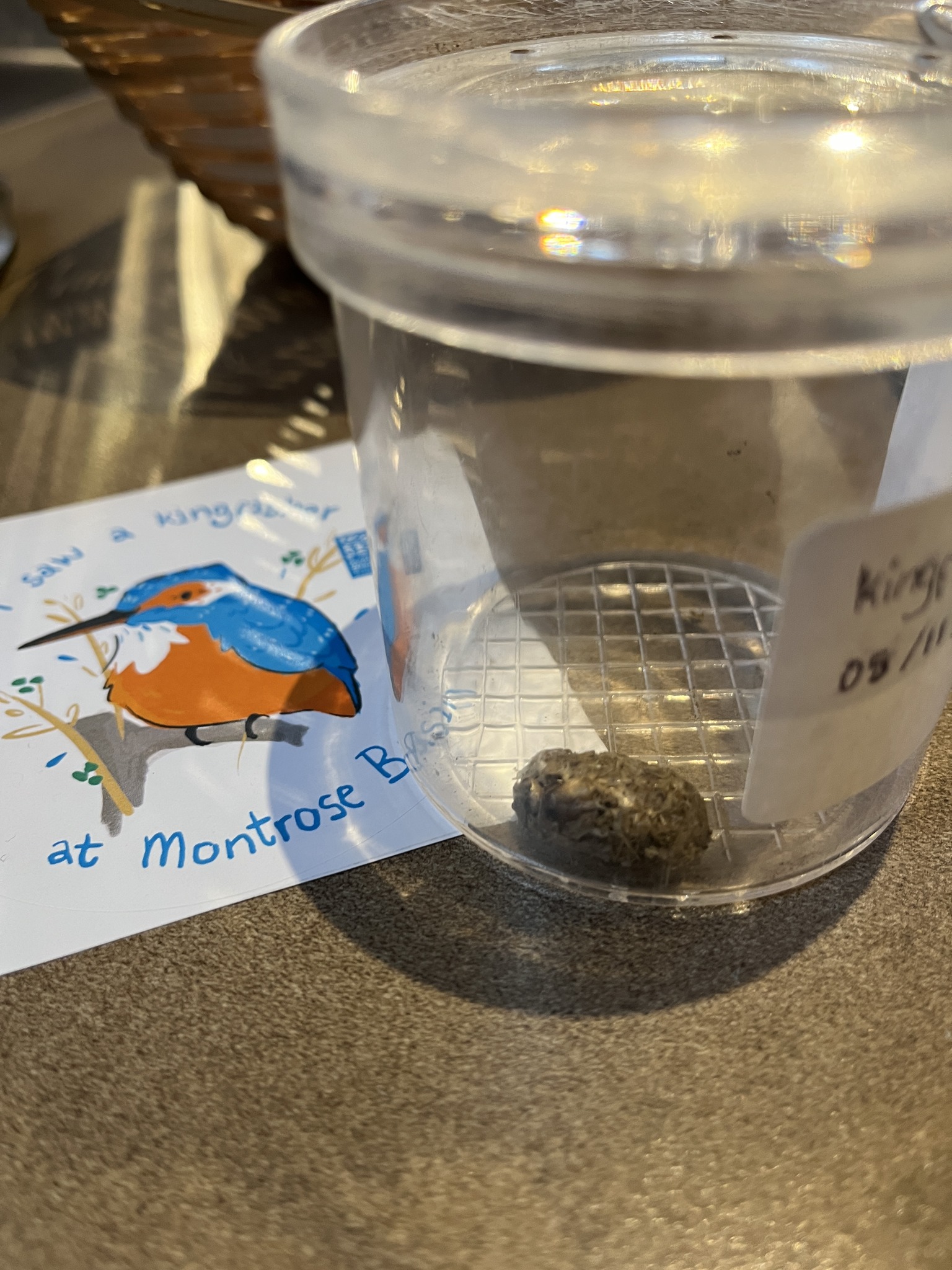
The dominant prey of the Common Kingfisher is, unsurprisingly, fish, but they very sporadically consume other prey such as invertebrates, amphibians or reptiles (Cvech & Cvech, 2015). Most studies into the feeding habits and diets of kingfishers have been undertaken on birds in exclusively riverine habitats during the reproductive period. Very little is known about what types of prey kingfishers consume during the autumn and winter period. Even less is known about the diets of kingfishers within estuarine habitats. So, we were very keen to dissect the parcel to reveal its contents.
EDIT 21/02/24: The following photos were used on the last episode of Winterwatch this year! We sent in our analysis which inspired a whole segment of the episode.
Onto the dissection!
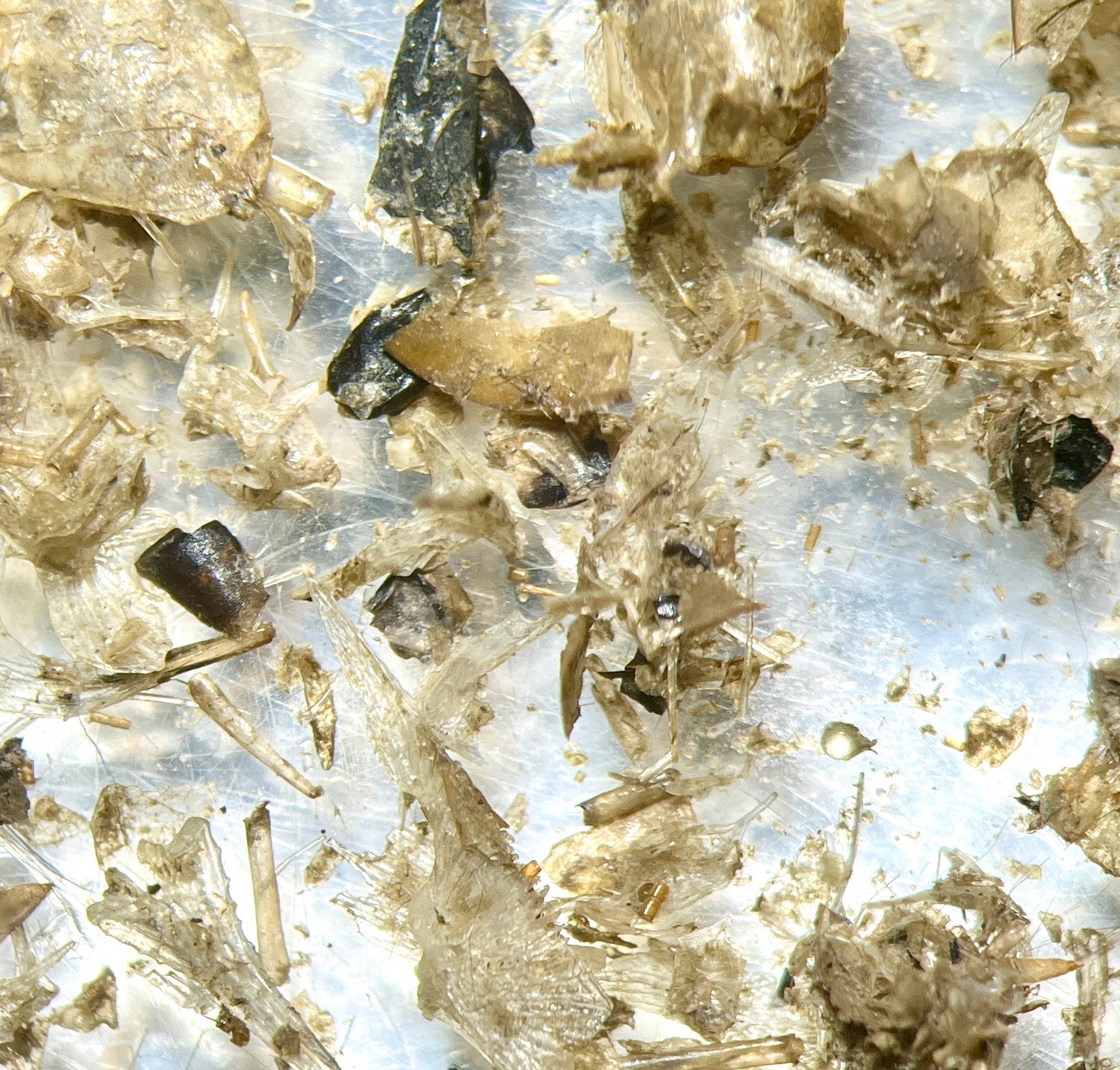
Sticklebacks
We are fortunate at Montrose Basin to see kingfishers regularly from the Visitor Centre windows, fishing in the brackish salt pans or even in the freshwater dipping pond. We have well documented photographic evidence that three-spined stickleback (Gasterosteus aculeatus) are common prey items. Kingfishers have been known to accidentally stick a fish, or two, to the perch through overzealous thwacking. (You can read our blog on that kingfisher ‘mystery’ here). It’s not surprising then to see stickleback pelvic spines, fin bones and miniscule vertebrae.
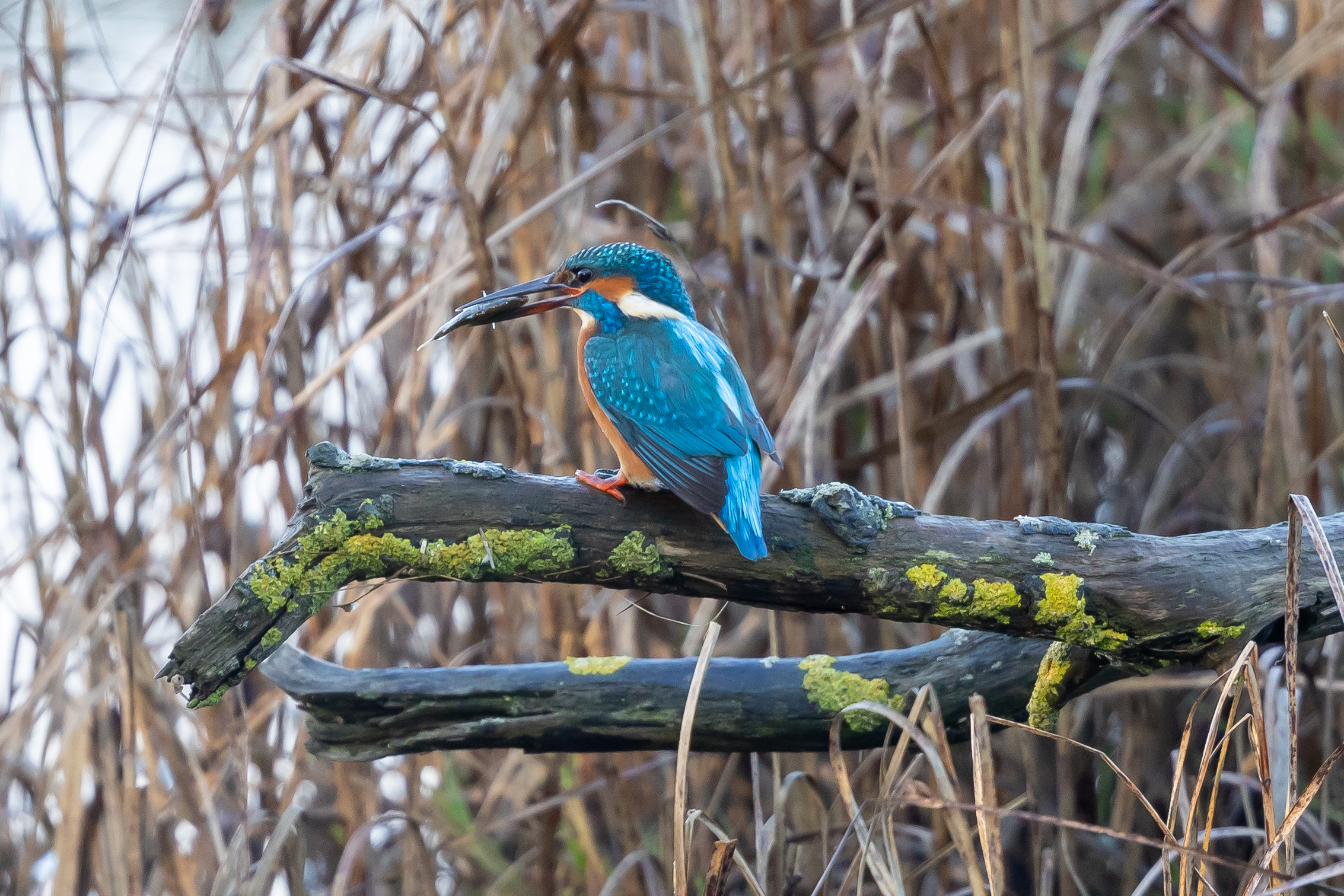
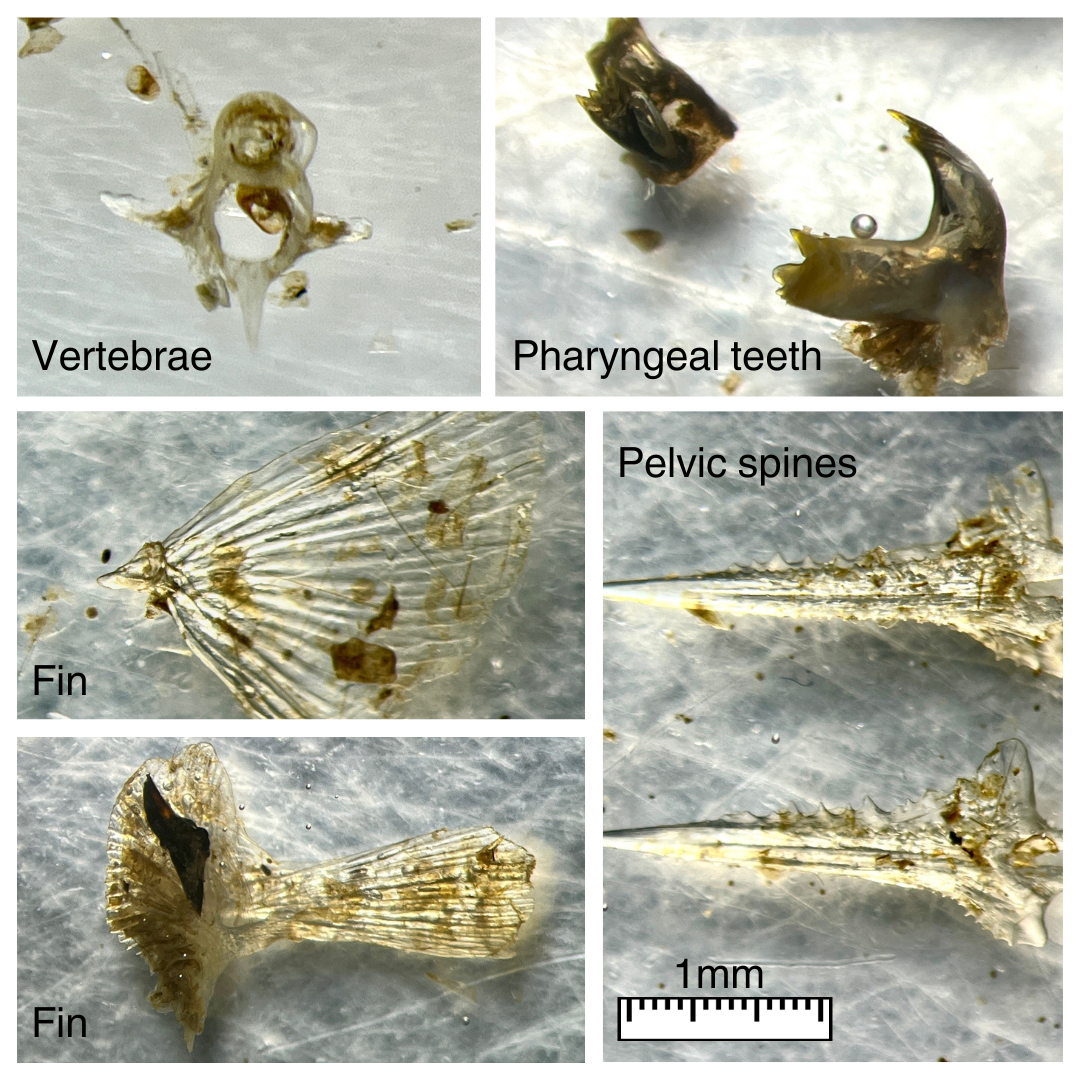
Shrimp
As the saltpans are brackish, the aquatic prey species present are different to those in purely freshwater environments. We have seen kingfishers take shrimp (Palaemon ssp.) during the winter months and this is reflected in the pieces of rostrum (the beaklike projection) found in the pellet. Studies have shown that various species of Palaemon have a high energy content (e.g. Sá et al. 2006, Janas & Bruska 2010, Gruszka & Więcaszek 2011) and could be a useful source of food for kingfishers in the colder months.
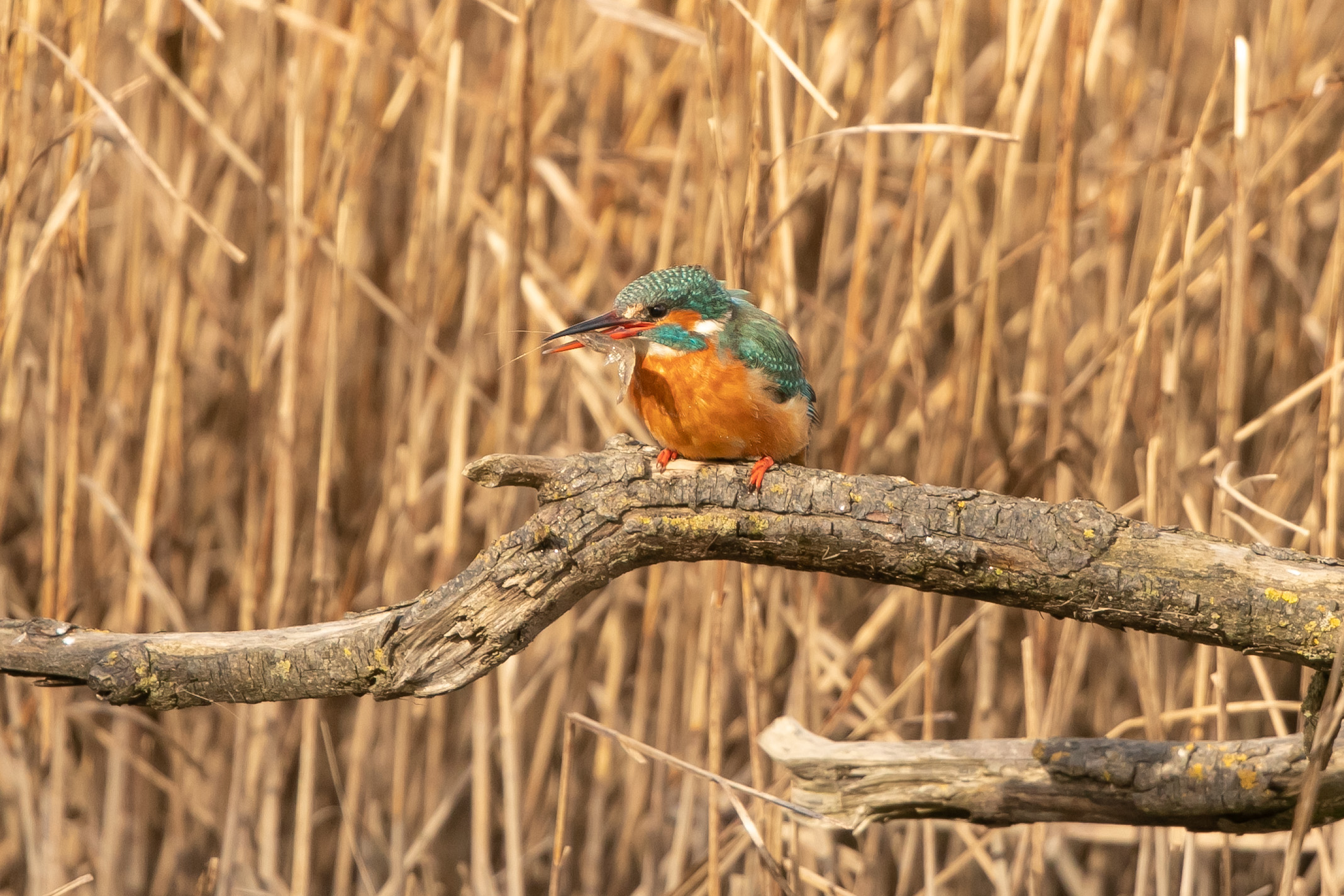
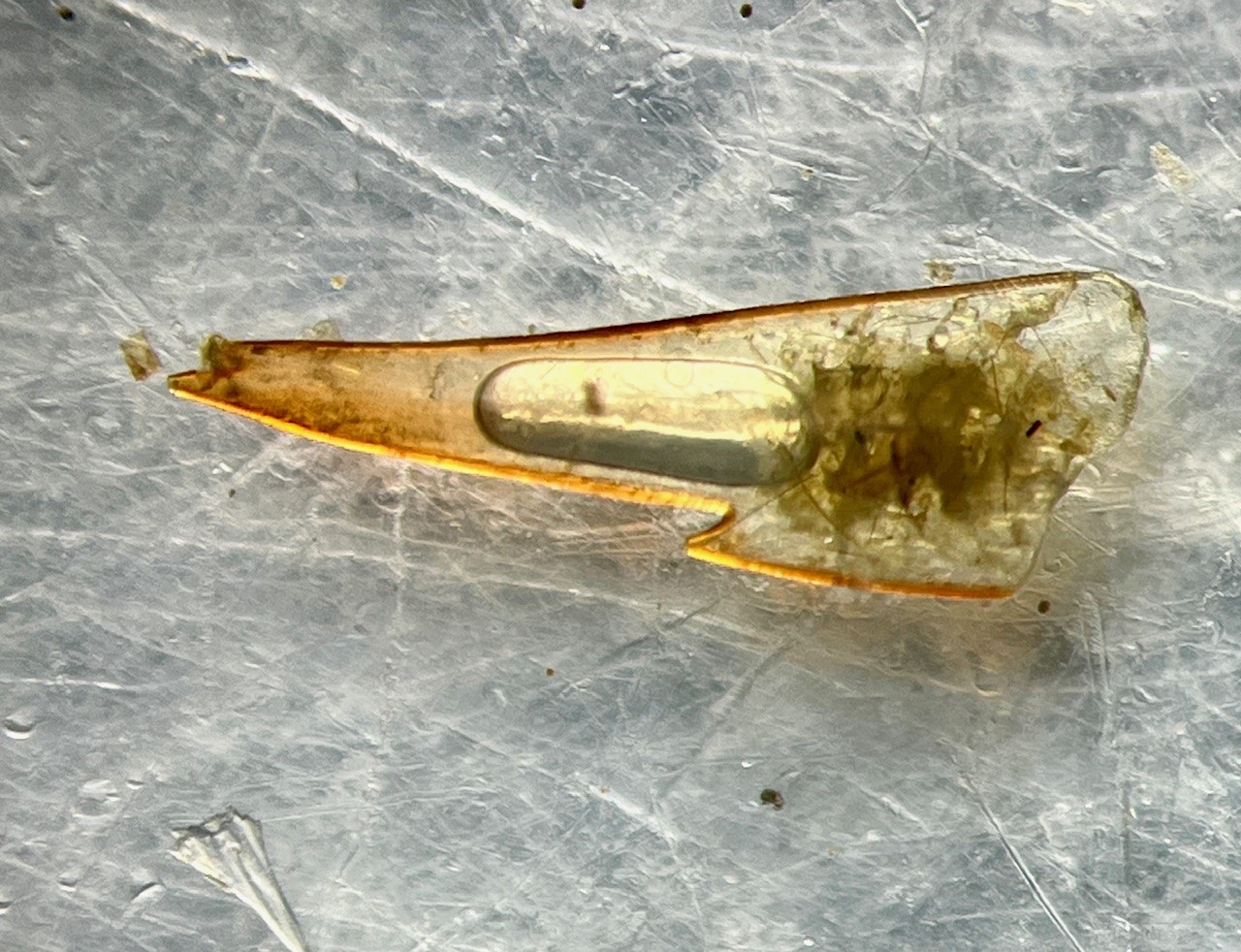
Invertebrates?!
What was astonishing was the presence of invertebrate remains; including a whole Cyclorrhaphan head, a few femurs and tibias and possible elytral cases.
EDIT 21/02/24: After having our kingfisher pellet analysis information on Winterwatch, we were posted some kingfisher pellets from the River Mole in London, which we were able to dissect for comparison. These pellets contained scaled from freshwater fish species such as minnow and bullhead, as well as fish vertebrae, and also femurs and elytral cases from Notonecta glauca (common backswimmer). With this extra experience, we can now say more confidently that the invertebrate femurs, tibias, and elytral case in the Montrose Basin pellet were from Notonecta glauca too. The head may also be Notonecta glauca, rather than the suggested Cyclorrhapha, but it’s very damaged and missing the proboscis.
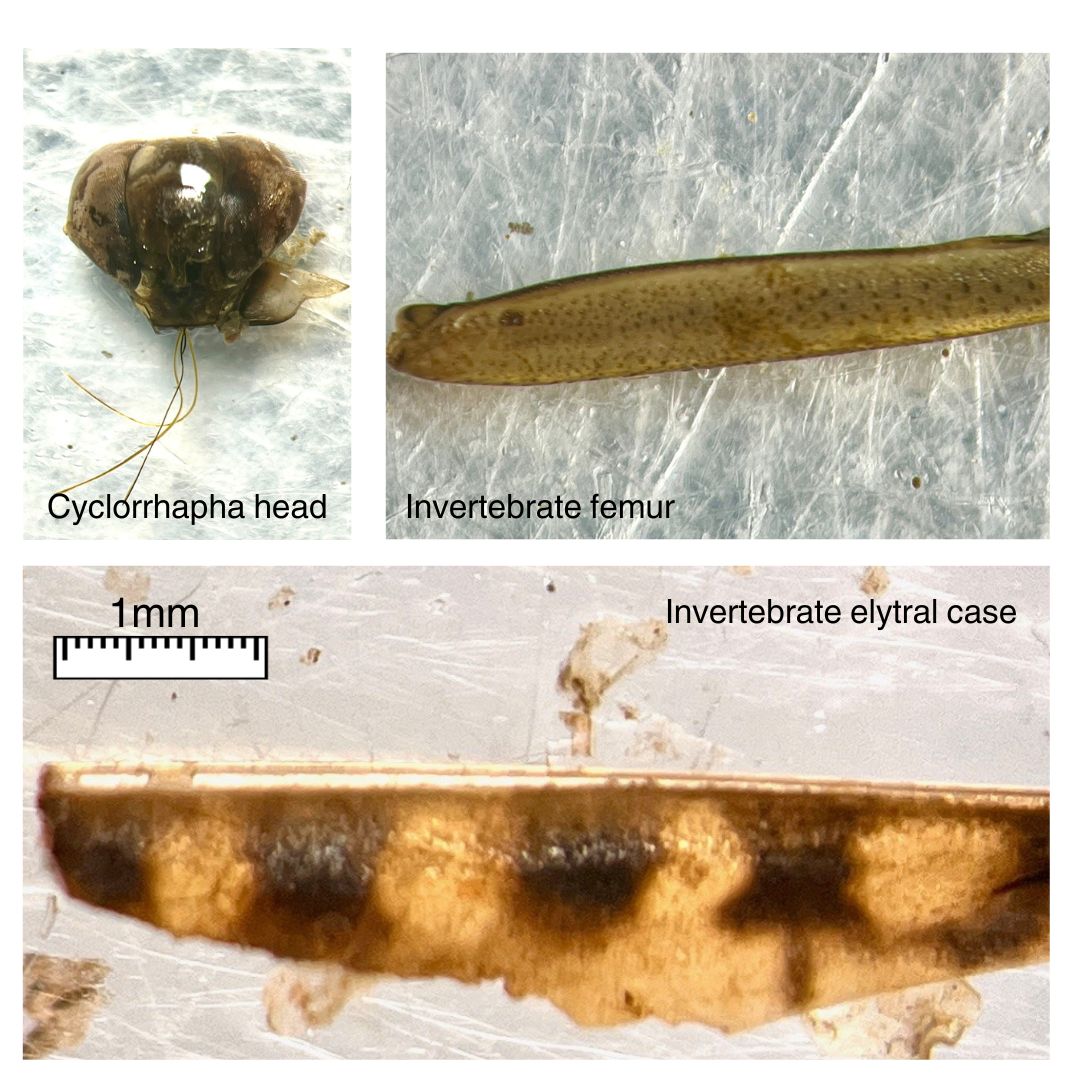
This supports a recent study conducted on estuarine Common kingfishers in Galicia which, following the analysis of pellet contents, showed that diets were far less ‘fish-centric’ than originally thought. Common prawn actually comprised the majority of the prey consumed, especially over winter (Romera-Suances, 2021).
Our single pellet dissection can add that kingfishers in brackish habitats are more opportunistic and their diets more varied as a result. We’d be keen to see how our kingfisher’s diet changes over the seasons, so we’ll be keeping an eye-out for those elusive parcels of ecological knowledge.
References
Cvech M. & Cvech P. 2015. Non-fish prey in the diet of an exclusive fish-eater: the Common Kingfisher Alcedo atthis. Bird Study 62: 457–465.
Janas U. & Bruska O. 2010. Energy values and energy resources of two prawns in Baltic coastal waters: the indigenous Palaemon adspersus and the non-indigenous Palaemon elegans. Oceanologia 52: 281–297
Gruszka P. & Więcaszek B. 2011. Palaemon elegans Rathke, 1837 in the food of Baltic cod (Gadus morhua callarias L., 1758) from the Gulf of Gdan´sk. Mar. Biol. Res. 7: 100–105.
Romero-Suances R. 2021. Presence of Common Kingfisher on the coast: the potential importance of shrimp as prey in marine habitats. Ardea 109: 258–264.
Sá R., Bexiga C., Veiga P., Vieira L. & Erzini K. 2006. Feeding ecology and trophic relationships of fish species in the lower Guadiana River Estuary and Castro Marim e Vila Real de Santo António Salt Marsh. Estuar. Coast. Shelf Sc. 70: 19–26.
Help protect Scotland’s wildlife
Our work to save Scotland’s wildlife is made possible thanks to the generosity of our members and supporters.
Join today from just £3 a month to help protect the species you love.
Preface
Many people will be familiar with owl pellets; grey-brown plum sized masses of fur, feathers and other indigestible material. You may have even had to dissect a few in biology …
